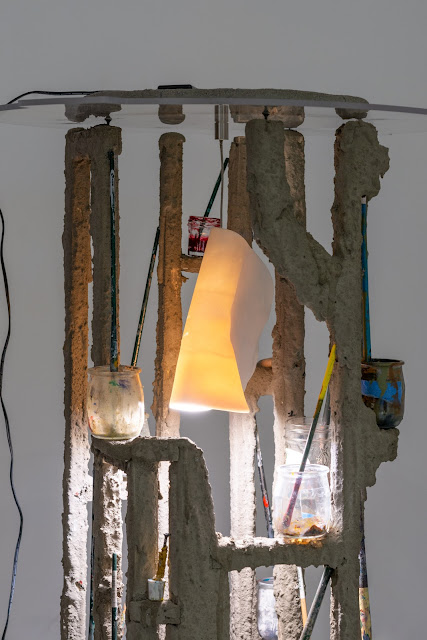Al McWilliams & Kyla Gilbert: Test Kitchen
organized by Scott Kemp
April 3 to April 19, 2025
4277 Fraser Street
A recipe can build from a single ingredient found at the back of the fridge. It can grow from the harvest of a backyard garden, or spill from a memory of flavours eaten under cool fluorescent lights in your aunt’s tiny kitchen. The art practices of Al McWilliams and Kyla Gilbert approach material and form as a chef might approach onions and olive oil; both artists draw from life experiences and experiences in the studio to make works that engage the body. They are related in their commitment to process-based making but unique in the logics they bring to those processes. In Al McWilliams & Kyla Gilbert: Test Kitchen the distinct logics of these two artists are presented in dialogue, much as one might present a meal in multiple courses. Here is the dinner, here is the dessert.
Al McWilliams graduated from the Vancouver School of Art in 1969. Since that time he has exhibited extensively in both solo and major group exhibitions throughout Canada, the United States and Europe and has represented Canada in exhibitions in Germany, France, Japan, Korea and the United States. His work is in most major public collections in Canada including The National Gallery, The Vancouver Art Gallery, The Art Gallery of Ontario and the Musee D’art Contemporain, Montreal. Along with his curiosity around the genesis of form Al's work has always been noted for its foregrounding of materials. Whether wax, lead, gold, bronze, stone, fire or water, there is a recognition that materials carry cultural weight, are not merely passive presences but actively affect us through their historical, metaphorical and symbolic dimensions.
Kyla Gilbert is a visual artist based out of Vancouver BC on the unceded territory of the xʷməθkʷəy̓əm (Musqueam), Sḵwx̱wú7mesh (Squamish), and səlilwətaɬ (Tsleil-Waututh) Nations. She graduated with a BFA in performance from Concordia University in 2017 and spent the two subsequent years touring as a puppeteer with DJ Kid Koala. Her current practice revolves around intuitive encounter with materials. As a former puppeteer and performer, she approaches her process as an improvisation that results in the creation of objects full of discrepancy, juxtaposition, awkwardness, and joy. Kyla completed her MFA in Studio Art from Emily Carr University in spring of 2022.































